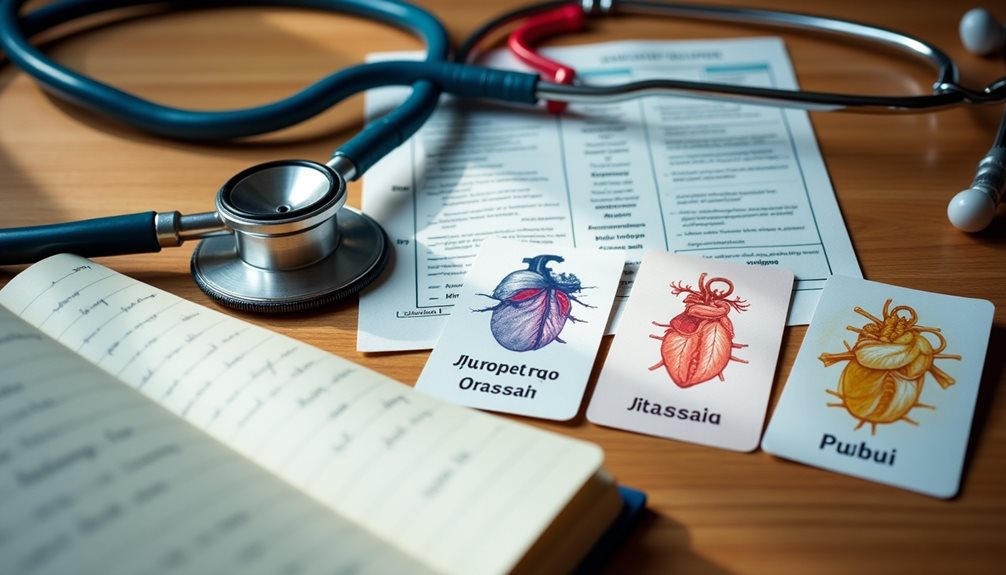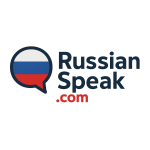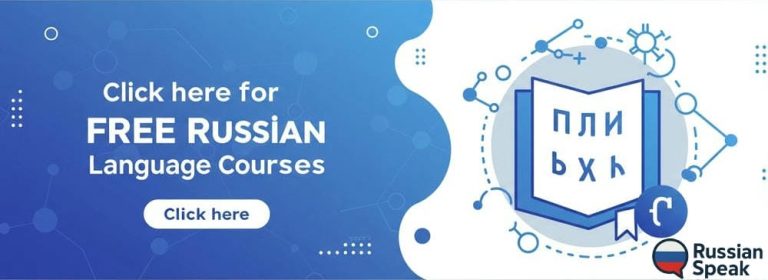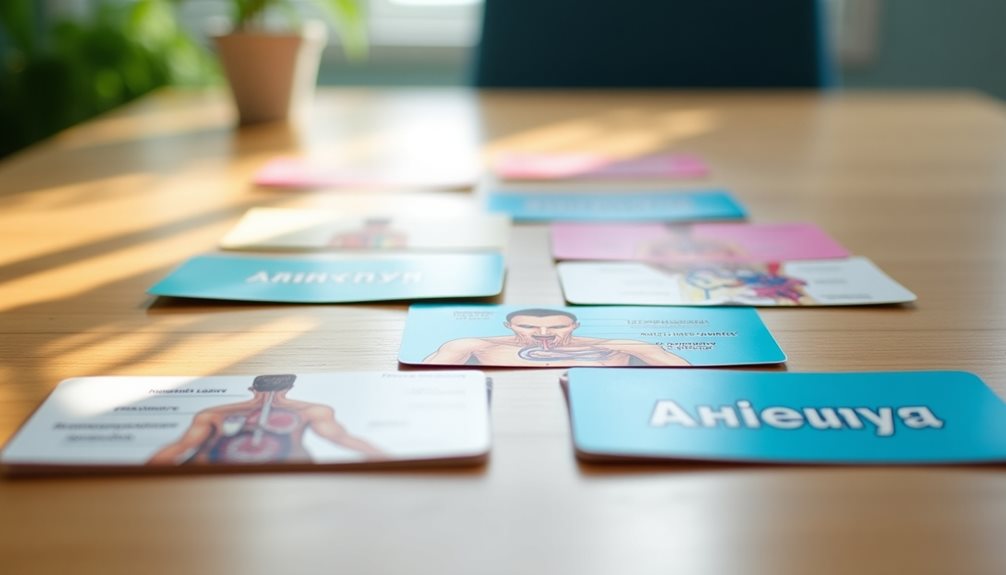Table of Contents
ToggleBasic Medical Vocabulary

Basic medical vocabulary is the essential language used in healthcare settings to communicate clearly and effectively. This vocabulary includes words related to the human body, diseases, symptoms, treatments, and medical procedures. Having a strong grasp of this terminology is critical for doctors, nurses, pharmacists, and other healthcare professionals so they can accurately describe patients’ conditions, understand medical records, and coordinate care.
Importance of Basic Medical Vocabulary
Medical vocabulary helps ensure clear communication, which is vital to patient safety. Misunderstandings in medical terms can lead to incorrect diagnoses or treatments, potentially causing harm. By using standardized terms, healthcare workers can avoid confusion and provide consistent care.
Additionally, understanding medical terms promotes medical ethics by supporting patient rights. When patients understand the terminology used by their providers, they can give informed consent for treatments and make better decisions about their health.
Key Areas of Medical Vocabulary
- Anatomy (Анатомия / Anatomia): This is the study of the structure of the human body. Words like heart (сердце / serdtse), lungs (лёгкие / lyogkiye), kidney (почка / pochka), and brain (мозг / mozg) fall into this category.
- Pathology (Патология / Patologiya): This refers to diseases and conditions. Terms include infection (инфекция / infektsiya), cancer (рак / rak), inflammation (воспаление / vospaleniye), and fracture (перелом / perelom).
- Symptoms (Симптомы / Simptomy): Symptoms are signs or indications of illness. Examples include fever (лихорадка / likhoradka), pain (боль / bol’), nausea (тошнота / toshnota), and dizziness (головокружение / golovokruzheniye).
- Treatments (Лечение / Lecheniye): Treatment terms cover medical interventions such as surgery (хирургия / khirurgiya), medication (лекарство / lekarstvo), therapy (терапия / terapiya), and vaccination (вакцинация / vaktsinatsiya).
How Medical Vocabulary Helps in Healthcare
- Clear Communication: Doctors and nurses use common language to describe symptoms and treatments without misunderstanding.
- Patient Understanding: Patients who know basic medical terms can better understand their health status and instructions.
- Collaboration: Multidisciplinary teams working together—such as doctors, nurses, physical therapists—rely on shared vocabulary for efficient care.
- Documentation: Accurate use of terms in medical records improves legal safety and continuity of care.
- Education: Medical students and new healthcare workers learn this vocabulary early to prepare for clinical work.
Examples of Common Medical Phrases in Russian
- “Do you have any pain?” — У вас есть боль? (U vas yest’ bol’?)
- “Where does it hurt?” — Где у вас болит? (Gde u vas bolit?)
- “Take this medicine twice a day.” — Принимайте это лекарство два раза в день. (Prinimayte eto lekarstvo dva raza v den’.)
- “You need surgery.” — Вам нужна операция. (Vam nuzhna operatsiya.)
Mastering basic medical vocabulary is not only essential for healthcare professionals but also helpful for patients, especially those interacting with healthcare systems in different languages or countries. This foundation supports better health outcomes, safer practices, and stronger trust between caregivers and patients.
In summary, basic medical vocabulary forms the backbone of effective healthcare communication. It spans knowledge about the body, illness, symptoms, and treatments, all crucial for ethical and safe medical practice. Learning these terms in both English and Russian can be especially useful for bilingual professionals or students working in international healthcare environments.
Common Medical Phrases
When learning Russian, especially in a medical context, knowing common phrases used by doctors and patients is very helpful. These phrases help patients explain their symptoms, understand what a doctor says, and follow medical advice. For English speakers learning Russian, it’s important to know both the phrases and how to pronounce them.
Here are some typical medical phrases and related Russian terms that will help you communicate effectively in a healthcare setting.
Useful Medical Questions and Phrases in Russian
- What brings you in today?
- Что вас сегодня беспокоит?
- [Shto vas segodnya bespokoit?]
- (What is bothering you today?)
- Where does it hurt?
- Где у вас болит?
- [Gde u vas bolit?]
- (Where do you have pain?)
- How long have you had this symptom?
- Как долго у вас этот симптом?
- [Kak dolgo u vas etot simptom?]
- (How long have you had this symptom?)
- Do you have any allergies?
- Есть ли у вас аллергия?
- [Yest li u vas allergiya?]
- (Do you have allergies?)
- Take this medicine twice daily.
- Принимайте это лекарство два раза в день.
- [Prinimayte eto lekarstvo dva raza v den’]
- (Take this medicine two times a day.)
- Do you have any questions?
- У вас есть вопросы?
- [U vas yest’ voprosy?]
- (Do you have any questions?)
- Please describe your symptoms.
- Пожалуйста, опишите свои симптомы.
- [Pozhaluysta, opishite svoi simptomy.]
- (Please describe your symptoms.)
- You need to rest.
- Вам нужно отдохнуть.
- [Vam nuzhno otdokhnut’.]
- (You need to rest.)
Common Russian Medical Terms
| Cyrillic | English Phonetic | English Definition |
|---|---|---|
| боль | bol’ | pain |
| температура | temperatura | temperature (fever) |
| кашель | kashyel | cough |
| головная боль | golovnaya bol’ | headache |
| лекарство | lekarstvo | medicine |
| симптом | simptom | symptom |
| диагноз | diagnoz | diagnosis |
| аллергия | allergiya | allergy |
| давление | davleniye | blood pressure |
| врач | vrach | doctor |
| пациент | patsiyent | patient |
| больница | bol’nitsa | hospital |
| аптека | apteka | pharmacy |
| рецепт | retsept | prescription |
Knowing these phrases and terms will help you feel more confident when visiting a Russian-speaking doctor or clinic. Practice saying them aloud to improve your pronunciation and recognition.
Anatomy Terms
Understanding anatomy terms is crucial for effective communication in medical and healthcare settings. Clear knowledge of the vocabulary related to muscle structure and bone types allows healthcare professionals to explain conditions, procedures, and treatment plans accurately and efficiently, which is vital for patient care.
Muscle Structure Terminology
Muscles are made up of specialized units that allow them to contract and produce movement. Two important terms in muscle anatomy are sarcomere and myofibril:
- Sarcomere (саркóмер, [sar-KO-mer]): This is the smallest functional unit of a muscle fiber. It is the segment between two Z-lines in a muscle cell and is responsible for muscle contraction. Inside sarcomeres, protein filaments called actin and myosin slide past each other, causing the muscle to shorten and generate force.
- Myofibril (миофибри́лла, [mee-oh-FEE-bree-lah]): These are long, thread-like structures found inside muscle cells (muscle fibers). Each muscle fiber contains many myofibrils lined up parallel to each other. Myofibrils are made up of repeating sarcomeres, so they play a central role in muscle contraction.
Muscles contract because sarcomeres shorten, pulling on tendons attached to bones and causing movement. Understanding these terms helps medical professionals discuss how muscles work, how injuries affect them, and how treatments like physical therapy can help recovery.
Bone Types
Bones provide structure, protect organs, and enable movement by acting as levers for muscles. They come in different shapes and sizes, classified into four main types based on their structure and function:
- Long Bones (дли́нные кóсти, [DLEEN-ny-ye KOS-tee]): These bones are longer than they are wide. They act as levers that muscles pull on to produce movement. Examples include the femur (thigh bone) and humerus (upper arm bone).
- Short Bones (корóткие кóсти, [ka-ROT-kee-ye KOS-tee]): These are roughly cube-shaped bones that provide stability and support with little movement. Examples include the bones in the wrist (carpals) and ankles (tarsals).
- Flat Bones (плóские кóсти, [PLOS-kee-ye KOS-tee]): These bones are thin, flat, and often curved. They protect internal organs and provide a surface for muscle attachment. Examples include the skull bones, ribs, and sternum (breastbone).
- Irregular Bones (непрáвильные кóсти, [nye-PRAH-vil-ny-ye KOS-tee]): These bones have complex shapes that don’t fit into the other categories. Examples include vertebrae in the spine and certain facial bones.
Importance of Precise Anatomical Language
Using accurate anatomical terms improves communication between healthcare professionals such as doctors, nurses, physical therapists, and surgeons. This clarity is essential when discussing diagnoses, planning surgeries, or explaining rehabilitation exercises. It also helps avoid confusion that could lead to errors in patient care.
Summary of Key Russian Terms
- Muscle fiber — мышечное волокно (mish-CHYOHCH-nuh-ye voh-LOHK-nuh)
- Sarcomere — саркóмер (sar-KO-mer)
- Myofibril — миофибри́лла (mee-oh-FEE-bree-lah)
- Long bone — дли́нная кóсть (DLEEN-naya kost’)
- Short bone — корóткая кóсть (ka-ROHT-kaya kost’)
- Flat bone — плóская кóсть (PLOS-kaya kost’)
- Irregular bone — непрáвильная кóсть (nye-PRAHV-il’naya kost’)
Familiarity with these terms enhances the ability to discuss procedures, diagnoses, and treatment plans. In addition, using precise anatomical language fosters clarity in interdisciplinary collaboration, ultimately improving patient outcomes and understanding in healthcare environments, where every detail matters greatly in patient care and medical education.
Symptoms and Conditions
Accurate identification of symptoms and conditions is essential in the medical field, as it directly influences diagnosis and treatment strategies. Medical professionals rely on precise terminology to effectively communicate and understand patient presentations.
Key Concepts in English and Russian
1. Symptom Identification — Определение симптомов
This means recognizing signs that show something is wrong with the body.
- Symptom — Симптом (see-MP-tom) — A sign of illness or injury.
- To have a symptom — Иметь симптом (ee-MYET’ see-MP-tom) — To experience a symptom.
![]()
2. Acute vs. Chronic Conditions — Острые и хронические состояния
- Acute — Острый (O-stry) — A condition that starts suddenly and lasts a short time.
- Chronic — Хронический (khra-NEE-chis-kiy) — A condition that lasts a long time or keeps coming back.
3. Common Symptoms — Распространённые симптомы
Examples include:
- Fever — Жар (zhar)
- Pain — Боль (bol’)
- Fatigue — Усталость (oo-sta-LOST’)
4. Severity Assessment — Оценка тяжести
This means measuring how bad or serious symptoms are. It helps doctors decide what kind of care is needed.
Related Russian Medical Vocabulary Table
| Russian (Cyrillic) | English Phonetic | English Definition |
|---|---|---|
| Симптом | see-MP-tom | Symptom |
| Болезнь | bo-LYEZN’ | Disease / Illness |
| Острый | O-stry | Acute |
| Хронический | khra-NEE-chis-kiy | Chronic |
| Жар | zhar | Fever |
| Боль | bol’ | Pain |
| Усталость | oo-sta-LOST’ | Fatigue |
| Диагноз | dee-AHG-noz | Diagnosis |
| Лечение | lee-CHEH-nye | Treatment |
| Симптомы | see-MP-toh-mih | Symptoms (plural) |
| Тяжесть | TYAZH-esht’ | Severity |
| Врач | vrach | Doctor |
| Пациент | pa-TSE-ent | Patient |
An in-depth grasp of these terms not only aids practitioners but also empowers patients by fostering informed discussions about their health.
Medical Procedures and Treatments
Medical procedures and treatments cover a broad spectrum of interventions designed to diagnose, manage, and treat various health conditions. These interventions are vital components of modern healthcare and can be broadly categorized into surgical techniques and rehabilitation methods.
Surgical techniques refer to invasive procedures performed to correct anatomical or functional abnormalities. These procedures range from minor outpatient surgeries to complex operations requiring specialized skills and equipment. Common surgical procedures include appendectomies (удаление аппендикса), which involve the removal of the appendix, and orthopedic surgeries (ортопедическая хирургия), aimed at repairing bones, joints, or muscles. Advances in surgical methods, such as minimally invasive surgery (минимально инвазивная хирургия), have reduced recovery times and improved patient outcomes by limiting tissue damage.
Rehabilitation methods focus on restoring function and enhancing quality of life after illness, injury, or surgery. Rehabilitation is a multidisciplinary process that includes physical therapy (физиотерапия), occupational therapy (трудотерапия), speech therapy (речевая терапия), and sometimes psychological support. Physical therapy involves exercises and manual techniques to improve mobility, strength, and coordination. Occupational therapy helps patients regain skills needed for daily living and working. Speech therapy addresses communication difficulties resulting from neurological or developmental issues.
Key aspects of rehabilitation include:
- Personalized treatment plans tailored to the patient’s specific condition and goals.
- Use of specialized equipment such as prosthetics (протезы), orthotics (ортезы), and assistive devices.
- Ongoing assessment to monitor progress and adjust therapies as needed.
- Emphasis on patient education to encourage active participation in recovery.
Understanding medical vocabulary related to procedures and treatments is crucial for effective communication between healthcare providers and patients. This knowledge helps patients make informed decisions about their care, understand potential risks and benefits, and follow treatment plans correctly.
Important Russian terms related to medical procedures and treatments include:
- Операция (Operation/Surgery)
- Диагностика (Diagnosis)
- Терапия (Therapy/Treatment)
- Восстановление (Recovery/Rehabilitation)
- Анестезия (Anesthesia)
- Инвазивный (Invasive)
- Минимально инвазивный (Minimally invasive)
- Реабилитация (Rehabilitation)
- Физиотерапия (Physical therapy)
- Трудотерапия (Occupational therapy)
- Протезирование (Prosthetics fitting)
By becoming familiar with these terms, both medical professionals and patients can improve cooperation, leading to better healthcare experiences and outcomes.
Medications and Prescriptions

Medications and prescriptions play an essential role in the management of health conditions, offering therapeutic benefits that can range from symptom relief to disease modification. Understanding medication types and adhering to prescription guidelines are vital for effective treatment.
When learning Russian, understanding the topic of medications and prescriptions is very useful, especially for visiting a pharmacy or a doctor in a Russian-speaking country. Here, we will expand on the topic and include common Russian terms with their pronunciation and meanings.
Types of Medications — Виды лекарств
- Antibiotics (Антибиотики) — Used to treat bacterial infections.
- Analgesics (Обезболивающие) — Pain relievers.
- Antihypertensives (Антигипертензивные препараты) — Medicines to lower blood pressure.
- Antidiabetics (Препараты для лечения диабета) — Medicines to control blood sugar.
Prescription Requirements — Требования к рецептам
Prescriptions in Russia often include:
- The name of the medication.
- Dosage (дозировка).
- Frequency of administration (частота приема).
- Duration of treatment (продолжительность лечения).
Patient Education — Обучение пациента
Patients should be informed about:
- Potential side effects (побочные эффекты).
- Drug interactions (взаимодействия с другими лекарствами).
- Proper storage (правильное хранение).
Refill Protocols — Правила повторного получения лекарства
- Some medications require a new prescription for refills.
- Prescription validity periods vary.
- Pharmacies may have specific refill policies.
Related Russian Terms
| Russian (Cyrillic) | English Phonetic | English Definition |
|---|---|---|
| Лекарство | Lekarstvo | Medication |
| Рецепт | Retsept | Prescription |
| Аптека | Apteka | Pharmacy |
| Таблетка | Tabletka | Pill |
| Капсула | Kapsula | Capsule |
| Дозировка | Dozirovka | Dosage |
| Принимать | Prinimat’ | To take (medicine) |
| Побочные эффекты | Pobochnye effekty | Side effects |
| Взаимодействие с лекарствами | Vzaimodeystvie s lekarstvami | Drug interactions |
| Инструкция по применению | Instruktsiya po primeneniyu | Instructions for use |
| Обезболивающее | Obezbolivayushchee | Painkiller |
| Антибиотик | Antibiotik | Antibiotic |
| Гипертония | Gipertroniya | Hypertension |
| Диабет | Diabet | Diabetes |
This structured approach enhances patient outcomes and supports informed decision-making in healthcare.
Emergency Medical Vocabulary
In emergency situations, clear and quick communication is essential to ensure that medical help is provided promptly and correctly. Understanding the specific vocabulary related to emergency medicine can make a significant difference for both healthcare workers and ordinary people who might find themselves in urgent situations.
One of the most important terms is неотложная помощь (neotlozhnaya pomoshch), which translates to “emergency aid.” This refers to the immediate medical assistance given to a person in critical condition, often before they reach a hospital. It includes actions that prevent a situation from getting worse and stabilize the patient’s condition.
Another crucial phrase is первая помощь (pervaya pomoshch), meaning “first aid.” First aid involves basic care given right after an injury or sudden illness. It includes simple but vital procedures such as stopping bleeding, performing CPR (cardiopulmonary resuscitation), and treating shock. Knowing how to provide первая помощь can save lives before professional medical help arrives.
Related to these is the phrase экстренные процедуры (ekstrennye protsedury), which means “emergency procedures.” These are specific medical actions taken in life-threatening situations, such as intubation (inserting a breathing tube), defibrillation (using an electric shock to restore heart rhythm), or administering emergency medications.
Recognizing the symptoms of serious health events is just as important. For example:
- Инфаркт (infarkt) – “heart attack,” a condition where blood flow to the heart is blocked, causing chest pain and other symptoms.
- Инсульт (insult) – “stroke,” which happens when blood supply to part of the brain is interrupted.
- Аллергическая реакция (allergicheskaya reaktsiya) – “allergic reaction,” which can range from mild skin rash to life-threatening anaphylaxis.
- Острая дыхательная недостаточность (ostraya dykhatelnaya nedostatochnost) – “acute respiratory failure,” difficulty in breathing that requires immediate support.
Knowing these terms helps people report symptoms clearly and get the right help faster.
Important emergency verbs and phrases include:
- Вызывать скорую помощь (vyzyvat’ skoruyu pomoshch) – “to call an ambulance”
- Остановить кровотечение (ostanovit’ krovotechenie) – “to stop bleeding”
- Проверить пульс (proverit’ puls) – “to check the pulse”
- Открыть дыхательные пути (otkryt’ dykhatel’nye puti) – “to open the airway”
- Наложить жгут (nalozhit’ zhgut) – “to apply a tourniquet”
Understanding these words and phrases helps both responders and bystanders act quickly and confidently during emergencies.
Why This Vocabulary Matters
- Speed: Using correct terms speeds up communication with emergency services.
- Accuracy: Clear descriptions reduce mistakes in treatment.
- Confidence: Knowing what to say helps reduce panic and improves decision-making.
- Safety: Proper first aid can prevent conditions from worsening until professional help arrives.
In summary, mastering emergency medical vocabulary in Russian equips people with the language tools necessary to recognize urgent health problems, provide immediate help, and communicate effectively with medical professionals. This knowledge directly contributes to saving lives and improving recovery outcomes.
Patient Care and Interaction
In healthcare, especially in emergency situations, effective patient care and interaction are very important. For English speakers learning Russian, it’s useful to know both the concepts and the related vocabulary to communicate well with Russian-speaking patients or colleagues.
1. Empathy — Эмпатия (Empatiya)
Empathy means understanding and sharing the feelings of another person. In patient care, this means recognizing how a patient feels and showing that you care.
- Example: Saying “I understand that you are scared” helps calm the patient.
- In Russian, you might say:
— Я понимаю, что вам страшно (Ya ponimayu, chto vam strashno) — “I understand that you are scared.”
2. Active Listening — Активное слушание (Aktivnoye slushaniye)
Active listening means paying full attention to what the patient says without interrupting. It also means showing that you are listening by nodding or repeating important points.
- Example: If a patient says they feel pain in their chest, repeat:
— Вы говорите, что у вас боль в груди? (Vy govorite, chto u vas bol’ v grudi?) — “You are saying you have pain in your chest?”
3. Clear Instructions — Чёткие инструкции (Chyotkiye instruktsii)
Providing clear instructions means giving simple and direct explanations about treatments or procedures so the patient understands what will happen.
- Example:
— Вам нужно принять этот препарат два раза в день. (Vam nuzhno prinyat’ etot preparat dva raza v den’) — “You need to take this medicine twice a day.”
4. Cultural Sensitivity — Культурная чувствительность (Kul’turnaya chuvstvitel’nost’)
Cultural sensitivity means respecting and understanding different cultural backgrounds that affect how patients view illness and treatment.
- Example: Some patients may prefer a family member to be present during treatment or may have specific dietary restrictions.
Useful Russian Vocabulary for Patient Care
| Русское слово (Russian) | Phonetic | English Meaning |
|---|---|---|
| Пациент | Patsiyent | Patient |
| Забота | Zabota | Care |
| Эмпатия | Empatiya | Empathy |
| Слушать | Slushat’ | To listen |
| Внимание | Vnimaniye | Attention |
| Инструкция | Instruktsiya | Instruction |
| Лечение | Lecheniye | Treatment |
| Боль | Bol’ | Pain |
| Тревога | Trevoga | Anxiety |
| Спокойствие | Spokoyestviye | Calmness |
| Культура | Kul’tura | Culture |
| Семья | Sem’ya | Family |
| Уважение | Uvazheniye | Respect |
| Общение | Obshcheniye | Communication |
This vocabulary set will help English speakers communicate more effectively in medical settings in Russian, focusing on patient care and interaction.
Frequently Asked Questions
How Can I Improve My Russian Medical Vocabulary Quickly?
To improve Russian medical vocabulary quickly, one can utilize the flashcards technique for efficient memorization while engaging in immersive learning experiences, such as conversing with native speakers or consuming relevant media, enhancing retention and practical application.
Can I Find Russian Medical Vocabulary in Textbooks?
Russian textbooks often contain sections dedicated to medical terminology, providing essential vocabulary. Additionally, medical dictionaries serve as valuable resources for thorough understanding, enhancing language acquisition for those pursuing proficiency in medical Russian.
How Do I Pronounce Difficult Russian Medical Terms Correctly?
To pronounce difficult Russian medical terms correctly, one should utilize pronunciation tips and phonetic guides. These resources provide clarity on syllable emphasis and phonetic nuances, enhancing the learner’s ability to articulate complex terminology accurately.



